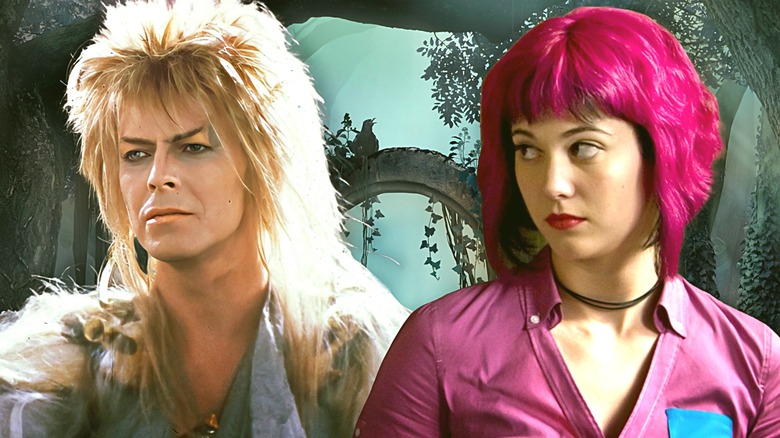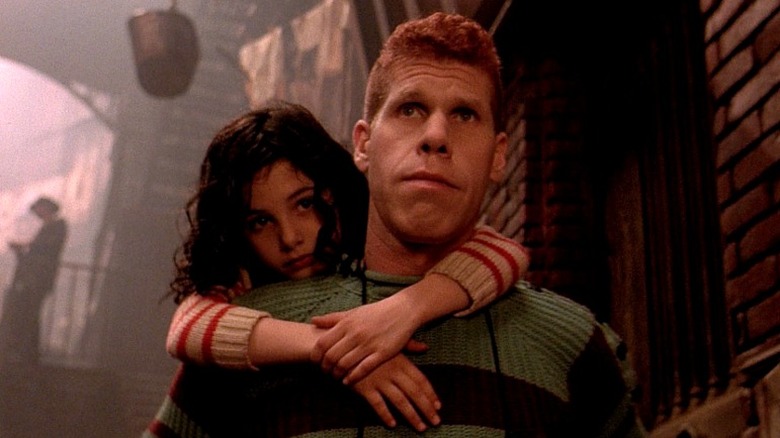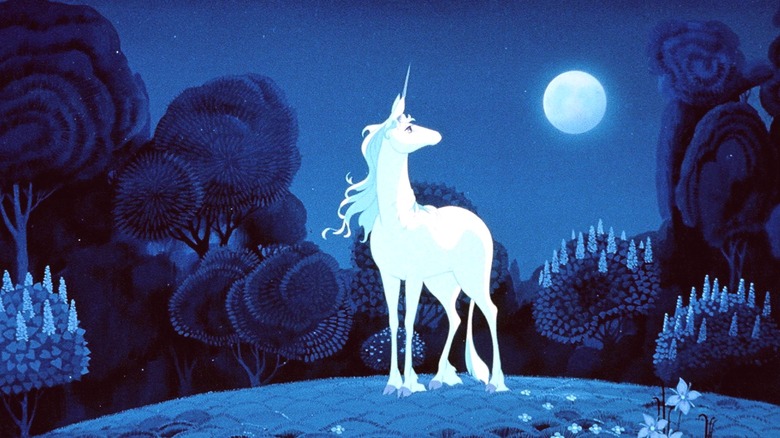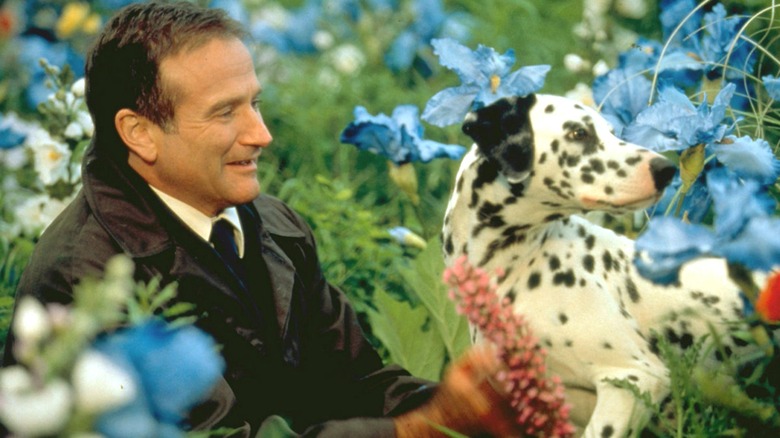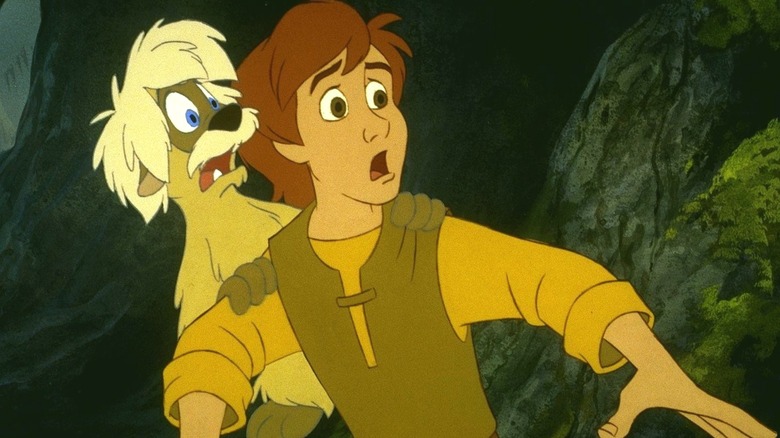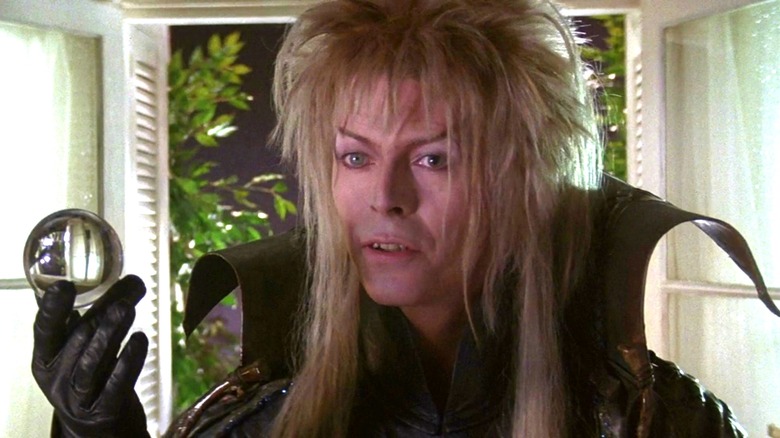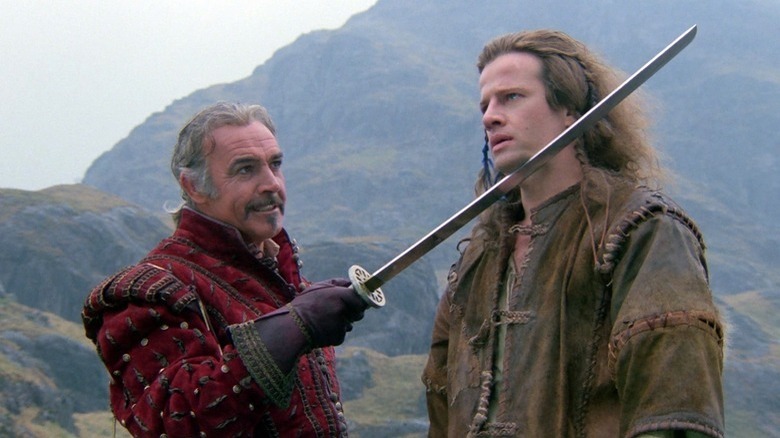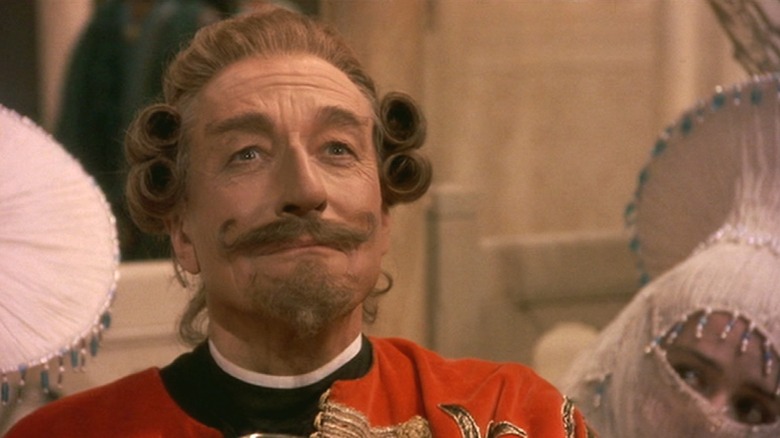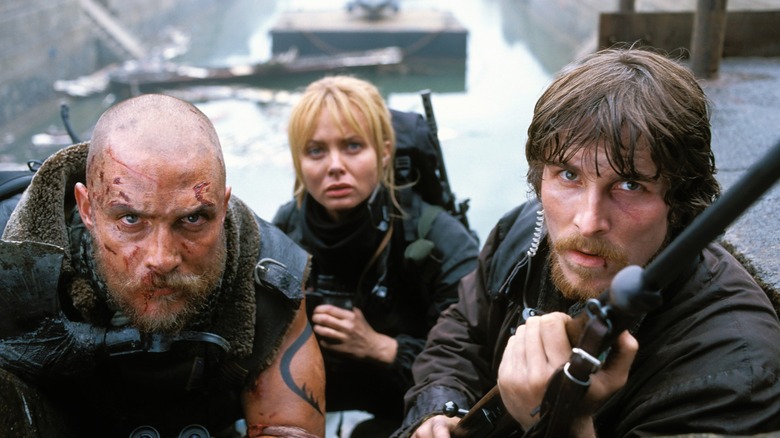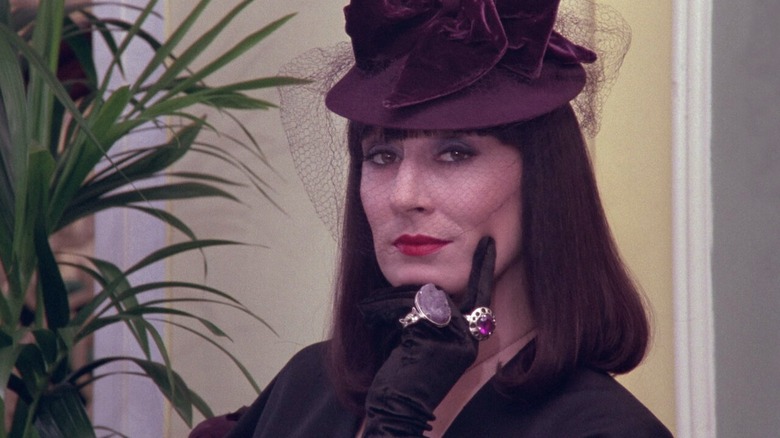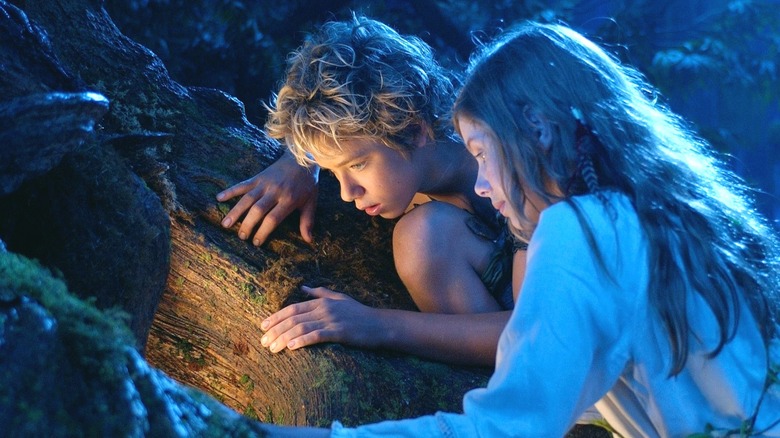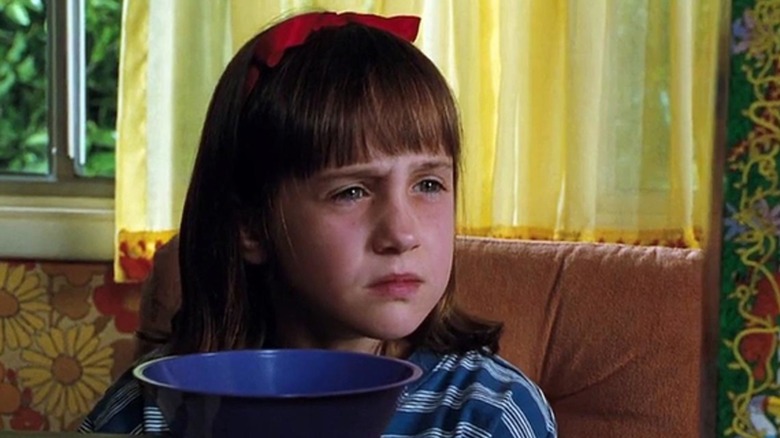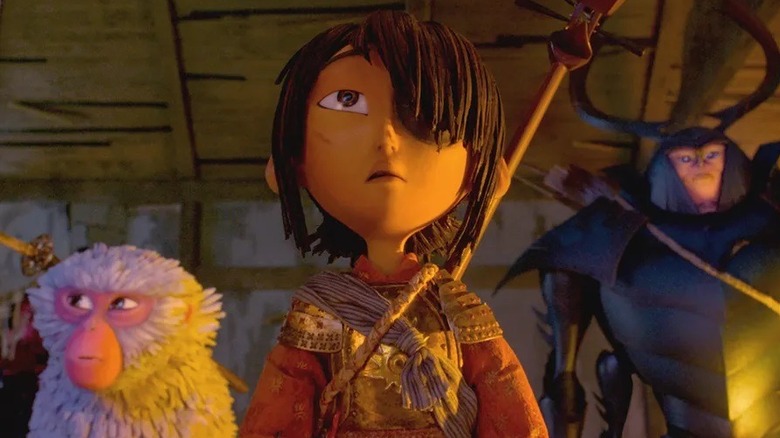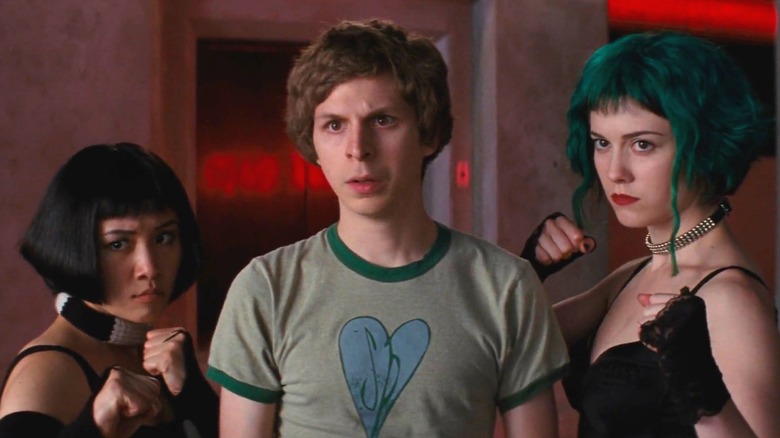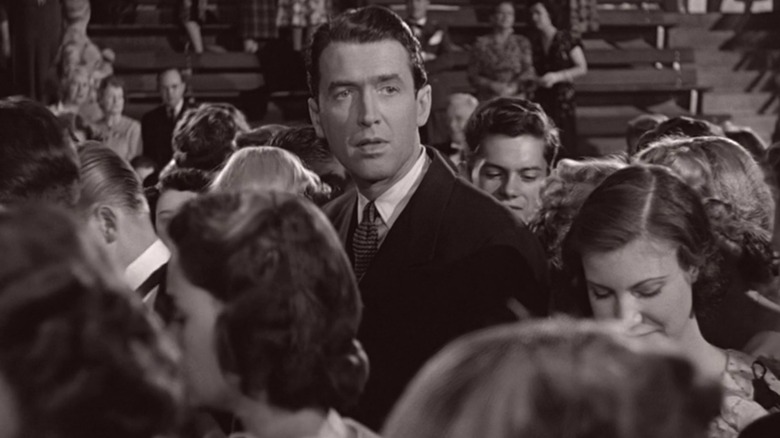Fantasy Movie Box Office Bombs That Are Actually Worth Watching
When you're trying to decide whether you should watch a film or not, a good way to judge its worth is its box office performance. If a studio spends $100 million bringing a story to life and only manages to pull in a fraction of that amount, the movie clearly isn't worth watching, right? Well, not necessarily. Fantasy movies have been in a box office rut in recent years, which is why we don't see as many as we used to. However, while many fantasy flicks underperform financially, they often do well with viewers and critics.
A lot of fantasy films have found second lives thanks to the rental and streaming markets. Moviegoers who opted against seeing a fantasy picture on the big screen can enjoy it from the comfort of their own home, and sometimes they find themselves wishing they had gone to see it when it was in cinemas. Despite failing to achieve box office dominance, many go on to entrance viewers for years, making the box office barometer a bit unreliable for the genre. Here are some of the best fantasy movies that bombed at the box office.
The City of Lost Children (1995)
Made by French filmmakers Jean-Pierre Jeunet and Marc Caro, "The City of Lost Children" is a science-fiction fantasy film starring Ron Perlman as a carnival strongman named One. When his adopted little brother is kidnapped by Krank (Daniel Emilfork), a villainous being who steals the dreams of children to prologue his life, One teams up with an orphan girl called Miette (Judith Vittet) to rescue him. They embark on a bizarre but engrossing adventure in a dark, misty world where anything can happen.
"The City of Lost Children" has a fantastic visual style that captivated critics at the time. Unfortunately, that didn't translate into ticket sales: This brilliant movie somehow made less than $1.8 million from an $18 million budget. In the years since, more and more people have come to appreciate this gem. "Jeunet and Caro have distinctive signatures like nobody else's," said The New Yorker, while The Seattle Times called it a "masterpiece" that utilizes both physical and digital effects to "stretch cinematic boundaries."
The Last Unicorn (1982)
Released in 1982, "The Last Unicorn" is an animated adaptation of Peter S. Beagle's 1968 novel of the same name. Arthur Rankin Jr. and Jules Bass came together to create the magical world presented in the book. The film cost $5 million to make, and while that doesn't sound like much today, it was especially expensive for an animated film back then, which perhaps explains why "The Last Unicorn" failed to do well at the box office. The film only earned $6.4 million, scraping back its production budget but almost certainly losing money with all the other costs of making and promoting a movie considered.
The film's underperformance didn't match up with the critical and audience reaction, as "The Last Unicorn" had much to offer, and still does to this day. The film's cast includes several high-profile actors, including Mia Farrow as the titular Unicorn, Alan Arkin as Schmendrick the Magician, Jeff Bridges as Prince Lir, and Christopher Lee as King Haggard. These days, "The Last Unicorn" is considered a cult classic. According to some critics, it was ahead of its time. "'The Last Unicorn' will endure as a film for reasons both intellectual and aesthetic," said AV Club. "It's full of rich ideas and revisions of outdated, sexist stereotypes, and thereby feels more modern than many animated classics."
What Dreams May Come (1998)
The late Robin Williams was one of those actors who appeared in many excellent films, though not all of them made a lot of money. "What Dreams May Come" falls into that category: It's a beautiful adaptation of Richard Matheson's 1978 novel of the same name, but it was a financial failure. The film was expensive, costing a whopping $85 million to produce, most of which went into its stunning portrayal of heaven (Williams plays a doctor who gets killed in a car crash and enters an afterlife born from his imagination). The movie won the Academy Award for best visual effects, but its take of $55.3 million made it a box office bomb.
Why did a film with great visual effects for the time, a compelling story, and a brilliant lead actor flop? Probably because it's an incredibly depressing examination of anguish, loss, and death. Despite the odd uplifting moment and a few comic respites, it's a hard film to watch, and audiences just weren't on board with it at the time. Thankfully, this somewhat flawed but definitely enjoyable film found an audience years after its release: "What Dreams May Come" has become popular on Netflix over the last few years, and we can't say we're surprised.
The Black Cauldron (1985)
Everyone knows that Disney is behind many of the best animated movies ever made, but the Mouse House isn't immune to a box office bomb. 1985's "The Black Cauldron" is perhaps the most notorious Disney dud of all time. The film — which follows a young boy and his companions as they embark on a quest to stop the evil Horned King from finding and using the mystical Black Cauldron – reportedly cost around $40 million to produce. That's not just a lot for an animated movie, it's a lot for any movie in the mid-1980s.
"The Black Cauldron" only made $21.3 million at the box office, becoming the film that almost killed Disney animation. However, this dark fantasy movie didn't fail because it's bad, it just wasn't on brand. This was Disney's first PG release, and it more than earns its rating, with some genuinely frightening imagery. Of course, this doesn't mean it can't be enjoyed by older kids and adults, many of whom have come to love this box office bomb. TV Guide has called the film "A glorious return to the days at Disney when animation was full and detail was everything."
Labyrinth (1986)
Directed by Jim Henson of Muppets fame, 1986's "Labyrinth" was deemed a failure at the time. Despite the presence of music superstar David Bowie as Jareth the Goblin King, this fantasy epic about a girl trying to rescue her half brother from a mystical maze only made $14.6 million at the global box office on a budget of $25 million. The film has become a cult classic in the years since, beloved by fantasy fans of all ages. It's made for children but it contains elements entertaining to adults, and while there are many silly bits, these only make the movie more memorable — it's been described as "gloriously weird" by Vox.
When it came out, a lot of critics panned "Labyrinth," including Roger Ebert, who felt as though there was "something missing." He did, however, acknowledge that it's "a movie that obviously was made with infinite care and pains," and it's this part of "Labyrinth" which has helped it stand the test of time. Henson put everything into making this movie his way, and it really shows on the screen. Today, the film is Certified Fresh on Rotten Tomatoes, with critics raving about its boldness. The Chicago Tribune called it "A real masterpiece of puppetry and special effects," while The New York Times dubbed it "A remarkable achievement."
Highlander (1986)
"Highlander" features Sean Connery as an immortal Egyptian with a Scottish accent, while the main character, Scottish warrior Connor MacLeod, is played by American-born French actor Christopher Lambert, who barely spoke English at the time. Sure, the casting was odd, but their on-screen chemistry is undeniable. Connery's character trains fellow immortal MacLeod in the ways of the sword so that he can stop Clancy Brown's villain (known as The Kurgan) from becoming the victor at an event called the Gathering, which is set to happen in New York City. It's a great set up, though audiences at the time didn't see that — "Highlander" cost $16 million to make, but it only pulled in $12.9 million at the global box office.
Despite its failure, "Highlander" spawned an expansive franchise consisting of comics, novels, feature films, television series, a cartoon, and video games. If you're wondering how a commercial dud spawned such a massive franchise, it's because many people fell in love with the film over time. This is due to how well the movie is structured, the brilliant soundtrack composed and recorded by Queen, and the film's memorable tagline: "There can be only one." "Highlander" became engrained in popular culture and is widely seen as a cult classic today, a film that every fantasy fan should see at least once.
The Adventures of Baron Munchausen (1988)
"The Adventures of Baron Munchausen" is an epic fantasy film by director Terry Gilliam. The film (which is about the titular character recounting his unbelievable travels in 18th-century Europe) was only supposed to cost $23.5 million, but the budget "quickly spiraled out of control and the film threatened to become that most dreaded of Hollywood monsters, a rogue production capable of seriously damaging companies and careers with runaway costs," said the Los Angeles Times.
In the end, "The Adventures of Baron Munchausen" cost $46.6 million to make due to numerous production problems, and it only managed to pull in $8 million when it hit theaters. That firmly cemented the film as a box office bomb, though the people who did see it loved it, and those in the industry appreciated what Gilliam was trying to do. The film got four Academy Award nominations in technical categories and became a cult classic. It's been released by The Criterion Collection, so it's fair to say that "The Adventures of Baron Munchausen" holds a place in popular culture.
Reign of Fire (2002)
Fantasy films and dragons go together like peas and carrots. There have been plenty of dragon movies over the decades, but some are more memorable than others. The creators of "Reign of Fire" (an England-set film about humankind battling against a race of recently reawakened dragons) hoped to build a franchise off the back of the film after it dropped in 2002, but the box office returns were not what they had hoped for, despite the dragons looking great for the time. The film cost $60 million to make, and while it made more than that at the box office, a global return of $82 million was widely seen as a failure.
"Reign of Fire" slowly earned a cult status in the years following its release. The fact that the film features three future stars in Christian Bale, Gerard Butler, and Matthew McConaughey certainly helped matters, but it's the unapologetically over-the-top nature of the film that makes it stand out. "There's no denying the B-movie glee that permeates the entire project," Bloody Disgusting said after revisiting the movie in 2023. "Sure, the studio-mandated rewrites may have neutered what was once a novel premise, but there are still enough flashes of brilliance here to make the experience worthwhile."
The Witches (1990)
British writer Roald Dahl's work has been adapted into dozens of films over the years, many of which are considered classics. One that didn't do well at the box office is 1990's "The Witches," starring Anjelica Huston as the world's most powerful witch. Her plot to turn children into mice meets resistance from a boy named Luke Eveshim (Jasen Fisher) and his grandmother Helga (Mai Zetterling). It wasn't particularly expensive, costing just $11 million to make, but it only took in $10.3 million in ticket sales, making it a financial failure.
When it came out, critics loved it, including Roger Ebert, who gave it three out of four stars. He wrote: "'The Witches' is an intriguing movie, ambitious and inventive, and almost worth seeing just for Anjelica Huston's obvious delight in playing a completely uncompromised villainess. Decades later, "The Witches" maintains a Fresh rating on Rotten Tomatoes, with an impressive score of 94%. Like many adaptations of Dahl's work, it enjoys cult classic status.
Peter Pan (2003)
J.M. Barrie's classic novel "Peter Pan" has been brought to the big screen several times, but Peter Pan films don't always do well financially, as Universal found out the hard way. 2003's "Peter Pan" cost the studio $135 million to produce, but it only pulled in $129 million at the box office, according to Forbes. When it hit theaters, critics praised the film as a mature yet faithful adaptation of Barrie's novel. The movie's brilliant VFX helped reimagine the world of Neverland like never before. So where did it all go wrong for this retelling of the story of the boy who wouldn't grow up?
"Peter Pan" failed at the box office largely because of some tough competition, dropping in cineplexes alongside some far more profitable pictures: It went up against "The Lord of the Rings: The Return of the King" and "The Last Samurai," to name but a few. It was a stacked season and this fantasy adventure flick was largely overlooked as a result, but it's most certainly worth your time, as its Certified Fresh status on Rotten Tomatoes confirms.
Matilda (1996)
"Matilda" is another Roald Dahl adaptation that did an outstanding job at nailing the source material while failing to meet expectations at the box office. The film, which was co-produced and directed by Danny DeVito, cost $36 million to make but brought in just $33.4 million. It's considered a classic children's movie today, so what went wrong?
The film's financial failure can be attributed to several factors, including a packed release schedule when it premiered: "Matilda" competed for ticket sales against "A Time to Kill," "Independence Day," and "Jack." Another problem the film faced was a smaller existing fan base compared to Dahl's other works. It's well known today, but "Matilda" simply wasn't one of the author's most famous works at the time.
That being said, it's still surprising that "Matilda" didn't even manage to break even. It's a well-made film with some great performances, especially from Mara Wilson, who shines as the titular telekinetic child genius who gets neglected by her family. It's hardly surprising that it blew up in the home video market and continues to find viewers decades later via streaming.
Kubo and the Two Strings (2016)
The Japan-set "Kubo and the Two Strings" is a beautifully animated stop-motion fantasy film about a boy with a magical instrument who embarks on a quest to defeat the Moon King, his villainous grandfather. It boasts an all-star cast: Charlize Theron, Ralph Fiennes, Rooney Mara, George Takei, and Matthew McConaughey all voice characters. Despite this, "Kubo and the Two Strings" only made $48 million domestically from a $60 million budget. The film scooped another $28 million overseas, but it was still regarded as a financial failure.
It looks incredible, but because it was made by a smaller studio in Laika, it was at a disadvantage. "Without mammoth advertising budgets, synergistic tie-ins, related franchises and universes, independent animated films in particular are susceptible to being crowded out of the marketplace," Animation Scoop explained. "Modern media is a shout-fest and whoever shouts the loudest gets the attention." However, even though it didn't make as much money as it probably should have, the film looks set to stand the test of time — at the time of this writing, it holds a near-perfect score of 97% on Rotten Tomatoes.
Scott Pilgrim vs. the World (2010)
"Scott Pilgrim vs. the World" leans a bit more toward the rom-com genre, but it has plenty of fantastical elements related to video games mixed in. The film is a relatively faithful adaptation of Bryan Lee O'Malley's "Scott Pilgrim" graphic novels, starring Michael Cera as the titular character. If he wants to date his crush Ramona Flowers (Mary Elizabeth Winstead), he has to defeat her seven evil exes. It wasn't cheap, costing the studio $60 million to produce, but it only made $51.6 million at the box office, making it a financial failure.
Much of the cost arose from its extensive use of special effects. The film's many fights are visual feasts, but they pretty much erased the possibility of the movie making much money. Unsurprisingly, "Scott Pilgrim vs. the World" later became a cult classic, beloved by more than just fans of the graphic novels. Many critics praised it at the time and it maintains a Certified Fresh rating of 82% on Rotten Tomatoes to this day. If you're a fantasy fan and you still haven't seen it, make sure to add this film to your watchlist.
It's a Wonderful Life (1946)
Frank Capra's "It's a Wonderful Life" is widely considered to be a Christmas classic, but it wasn't always this way. The film (which at its core is a supernatural fantasy about a man who meets his guardian angel while on the verge of suicide) bombed when it was released in 1946, losing half a mission dollars. This was a devastating amount of money for a studio to lose at the time. The film eventually fell into public ownership and its revival began in full force during the 1960s thanks to cable TV.
Capra could never understand why the film flopped. According to film critic Marc Eliot, who spoke to the filmmaker about "It's a Wonderful Life" when they bumped into each other at a party in 1972, Capra was utterly baffled by its failure. "He couldn't understand it," Eliot told the Sunday People (via Mirror). "He thought it was a fabulous Christmas film. It had all the ingredients — Jimmy Stewart, angels, a fantastic script."
Eliot believes that "It's a Wonderful Life" struggled financially because people didn't want to see depressing stories right after WWII, especially from Stewart, who was known as a comedy star before the war. "After the war, there was an edge which came out of his experiences," Eliot said. "He'd aged a bit, his head wasn't entirely together — but the public didn't want to see it."
If you or someone you know is struggling or in crisis, help is available. Call or text 988 or chat 988lifeline.org
